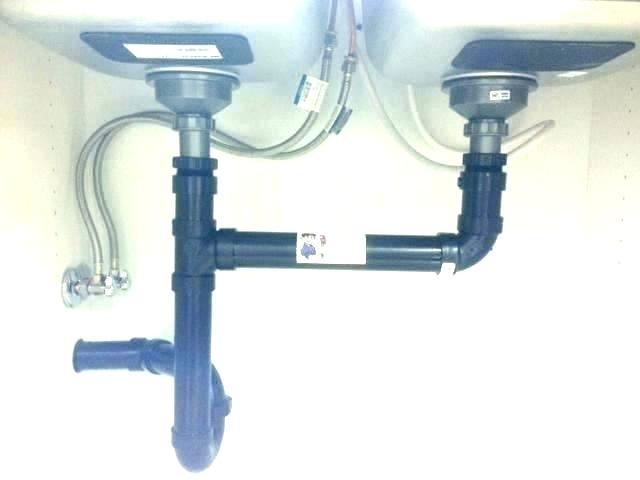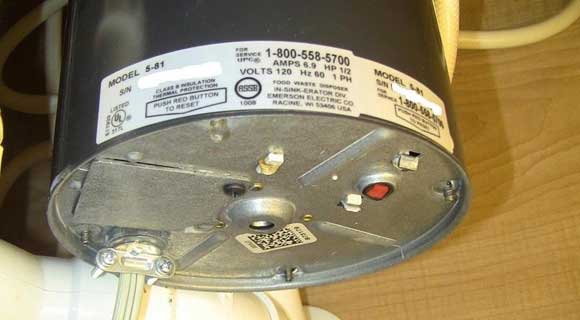Easy-to-Follow Instructions for Repairing a Leaky Waste Disposal
Easy-to-Follow Instructions for Repairing a Leaky Waste Disposal
Blog Article
We've found the article relating to How to fix a pretty consistent leak from my garbage disposal down the page on the web and concluded it made sense to share it with you here.

Waste disposal unit are essential kitchen area devices that help in throwing away food waste efficiently. However, a leaking garbage disposal can be an aggravating and untidy trouble to manage. Fortunately, many leaks can be repaired quickly with a few easy actions. In this write-up, we will certainly go over just how to take care of a dripping garbage disposal efficiently.
Introduction
Garbage disposals are mounted under kitchen sinks and are designed to shred food waste right into smaller sized pieces, permitting it to travel through the plumbing system easily. While these tools are normally reputable, leaks can occur gradually due to damage, loose connections, or damages to the system.
Common Reasons For Leakages in Waste Disposals
Worn Seals and Gaskets
Seals and gaskets play an essential duty in stopping water from leaking out of the garbage disposal. Gradually, these components can degrade, leading to leaks around the disposal device.
Loose Links
The connections between the garbage disposal and the pipes system can come to be loosened over time, triggering water to leakage out throughout procedure.
Splits or Holes in the Disposal System
Physical damage to the waste disposal unit, such as fractures or openings in the real estate, can likewise lead to leakages.
Determining the Source of the Leak
Before attempting to deal with a dripping waste disposal unit, it is important to recognize the resource of the leakage. This can commonly be done through aesthetic inspection or by carrying out simple tests.
Visual Assessment
Evaluate the garbage disposal unit very carefully for any kind of indicators of water leak. Pay attention to areas around seals, gaskets, and connection factors.
Examining for Leaks
One way to evaluate for leaks is by running water through the disposal unit and checking for any kind of noticeable indicators of leak.
Devices and Materials Needed for Repairing a Leaking Garbage Disposal
Prior to starting the fixing procedure, collect the essential tools and products, consisting of a screwdriver, flexible wrench, plumbing professional's putty, replacement seals or gaskets, and epoxy or patching material for fixing cracks or holes.
Step-by-Step Overview to Dealing With a Dripping Waste Disposal Unit
Turn Off the Power
Before attempting any fixings, ensure that the power to the garbage disposal unit is turned off to stop the threat of electrical shock.
Find the Leak
Identify the exact area of the leak and determine the reason.
Tighten up Connections
Use a wrench to tighten up any type of loose links in between the disposal system and the plumbing system.
Change Seals or Gaskets
If the leak is due to used seals or gaskets, remove the old parts and replace them with new ones.
Patching Fractures or Holes
For splits or holes in the disposal device, use epoxy or an ideal patching material to secure the broken location.
Examining the Waste Disposal Unit After Repair
When the repair service is total, check the waste disposal unit by running water with it to make sure that the leakage has been solved.
Preventive Upkeep Tips to Prevent Future Leaks
To avoid future leaks, it is essential to execute normal maintenance on your garbage disposal. This consists of maintaining it clean, avoiding putting non-food items or tough items down the disposal, and periodically looking for leaks or other problems.
Final thought
Finally, taking care of a leaking garbage disposal is a relatively straightforward procedure that can be completed with standard tools and products. By complying with the actions described in this write-up and practicing preventative upkeep, you can maintain your garbage disposal in good working problem and avoid expensive repairs in the future.
HERE’S HOW TO FIX YOUR GARBAGE DISPOSAL
WHAT TO DO IF SOMETHING IS STUCK IN YOUR GARBAGE DISPOSAL
If the impeller won’t turn, there’s probably something stuck in the disposal. It could be a steak bone or peach pit, although plumbers report pulling all sorts of inappropriate objects out of disposals, such as bottle caps or aluminum foil. Make sure power to the disposal is off, and look inside to see if you can see the source of the jam.
Never stick your fingers in a disposal. Pull out anything you see with tongs or pliers.
If the disposal still won’t work, it may be time to call a plumber or consider buying a new disposal. GEM Plumbing & Heating is here for all of your garbage disposal needs.
WHAT TO DO IF YOUR GARBAGE DISPOSAL DRAIN IS CLOGGED
Take everything out from underneath your sink and put a bucket or other container under your disposal to catch any water that drains out. Disconnect your disposal from the power supply. If it’s plugged into a wall outlet, unplug it. If it’s hardwired into an electrical box, go to the electrical panel and turn off the breaker for the disposal. Pour ¼ cup of baking soda into the drain, followed by ½ cup of white vinegar. Give the solution a few minutes to fizz and do its work. Look into the disposal with a flashlight to see if you can see an object that might be causing the clog. If you see it, remove it using tongs or pliers. MORE TIPS ON DEALING WITH A CLOGGED GARBAGE DISPOSAL
Never use drain cleaner in a garbage disposal. It can damage the plastic parts inside the disposal. You can also be splashed with the caustic liquid while working to clear the clog. Beware! Never stick your fingers into a garbage disposal. Trust us — not a good idea. In many instances, your dishwasher drains through your garbage disposal. This allows the disposal to grind any large food particles that may be drained out of your dishwasher. There are some jurisdictions, however, where the plumbing code prohibits such a connection. WHAT TO DO WHEN YOUR DISHWASHER DRAINS THROUGH THE DISPOSAL
Run some water in the sink so your plunger has at least a ½-inch of water to create a seal and plunge vigorously up and down several times. You may need to repeat this several times. Run hot water down the drain to clear any residue that remains.

We were shown that report on Why Is from a friend on another web property. Enjoyed reading our content? Please share it. Help someone else discover it. Thank you so much for going through it.
Give Me A Quote! Report this page